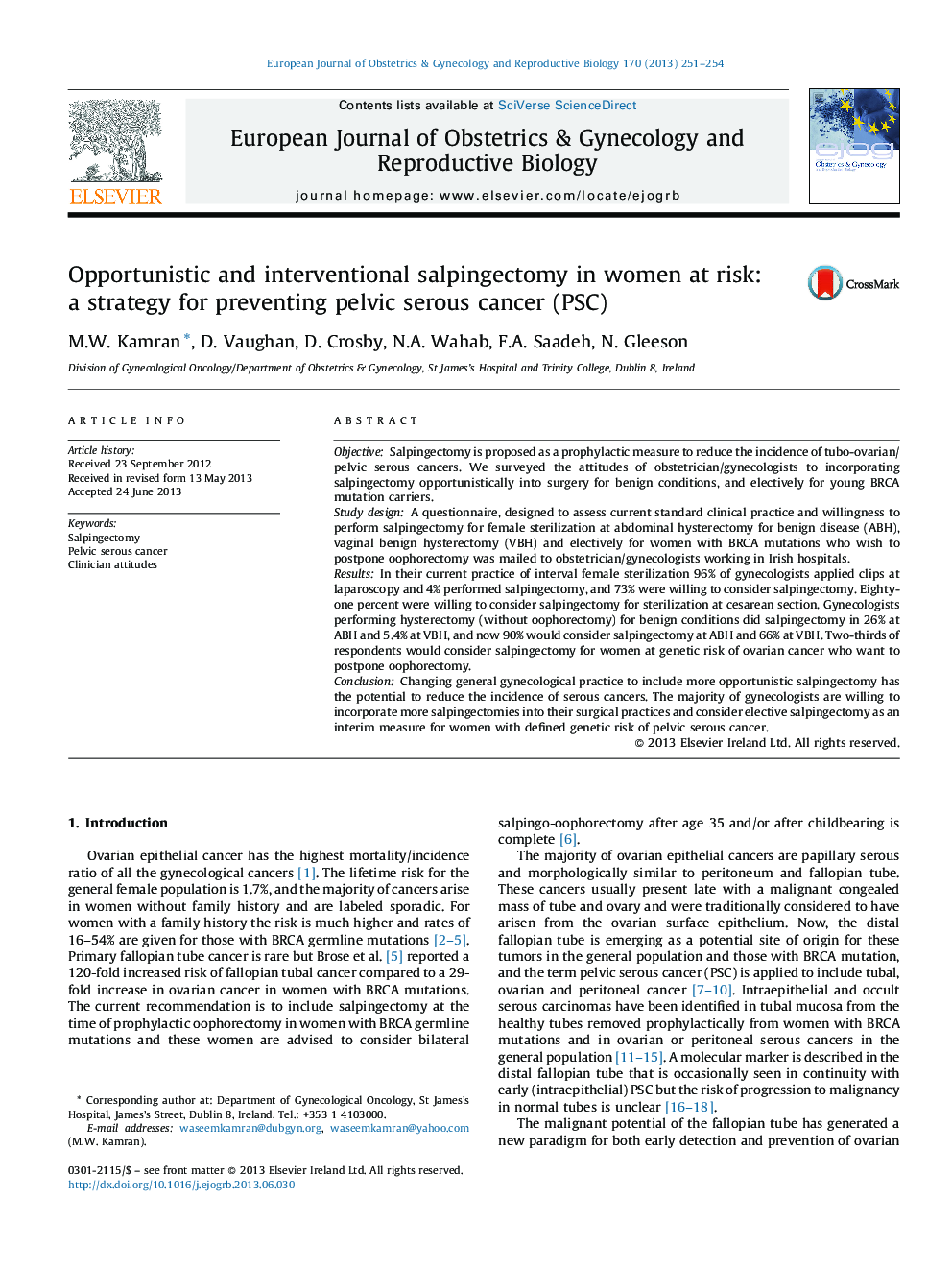| Article ID | Journal | Published Year | Pages | File Type |
|---|---|---|---|---|
| 3920011 | European Journal of Obstetrics & Gynecology and Reproductive Biology | 2013 | 4 Pages |
ObjectiveSalpingectomy is proposed as a prophylactic measure to reduce the incidence of tubo-ovarian/pelvic serous cancers. We surveyed the attitudes of obstetrician/gynecologists to incorporating salpingectomy opportunistically into surgery for benign conditions, and electively for young BRCA mutation carriers.Study designA questionnaire, designed to assess current standard clinical practice and willingness to perform salpingectomy for female sterilization at abdominal hysterectomy for benign disease (ABH), vaginal benign hysterectomy (VBH) and electively for women with BRCA mutations who wish to postpone oophorectomy was mailed to obstetrician/gynecologists working in Irish hospitals.ResultsIn their current practice of interval female sterilization 96% of gynecologists applied clips at laparoscopy and 4% performed salpingectomy, and 73% were willing to consider salpingectomy. Eighty-one percent were willing to consider salpingectomy for sterilization at cesarean section. Gynecologists performing hysterectomy (without oophorectomy) for benign conditions did salpingectomy in 26% at ABH and 5.4% at VBH, and now 90% would consider salpingectomy at ABH and 66% at VBH. Two-thirds of respondents would consider salpingectomy for women at genetic risk of ovarian cancer who want to postpone oophorectomy.ConclusionChanging general gynecological practice to include more opportunistic salpingectomy has the potential to reduce the incidence of serous cancers. The majority of gynecologists are willing to incorporate more salpingectomies into their surgical practices and consider elective salpingectomy as an interim measure for women with defined genetic risk of pelvic serous cancer.
